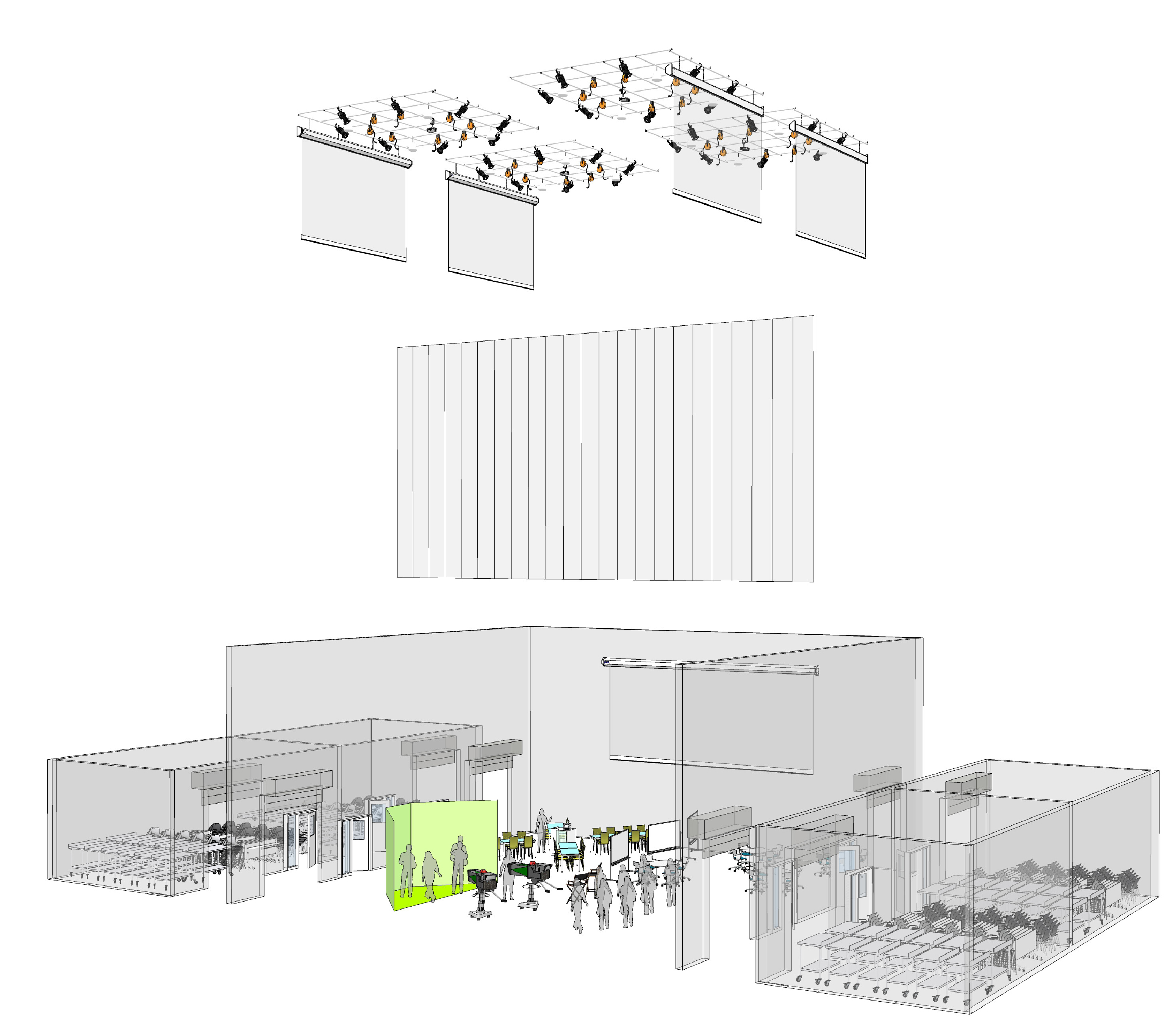To keep pace with a dynamic global economy Career and Technical Education needs a new space type with maximum flexibility.
Get Started
Why we need a new space for career and technical education
CTE requires spaces flexible enough to accommodate education and skills training for a dynamic job market.
Flexibility needed
Increasingly, CTE classes qualify as core credits. And emerging careers are hybrids of existing fields—biology and robotics, for example—so students must access education across departments.
CTE is becoming mainstream
The technology revolution is revealing a mismatch between the skills required for the jobs available and those possessed by the talent pool. Career and technical education (CTE) is evolving to help fill the skills gap by giving students the training to do tech-intensive jobs immediately after graduation and certification.
The skills gap
Four primary components of the Empower Center
CUT TO 25 WORDS. Recent projects inspired us to describe a new space typology that could keep pace with rapid change in CTE and other departments.
Tech Grids
Houses key technologies. Users can adjust ceiling heights, drop in power and data and tune lighting and audio conditions.
+
A day in the life of the Empower Center
BLACK BOX
WHITE BOX

Subscribe



8AM–NOON // STEAM LAB
During the morning the black box lab can be sub-divided to play host to a variety of uses such as traditional classroom, maker space, STEAM lab or multimedia studio arrangements. In this reduced configuration, power and data are easily accessible to individuals.
The Lab module is a black box characterized by durable materials with neutral finishes. It’s a controlled environment that permits users to adjust lighting conditions and acoustic properties. In the half-space option configuration, the black box is suited to lab lecture with power/data access.


After lunch, the black box can open to full size for large lectures, testing and test prep, assemblies or host theatre and music rehearsals. In the full space configuration, users can adjust specialized lighting and audio-visual tech to suit its use.
1PM–4PM // LECTURE HALL + REHEARSAL SPACE


In the evening, the black box can morph into a seated multimedia venue for activities (esports competition, theatrical productions, and music) where digital media, live performance, and controlled audio-visual environment are required.
6PM–8PM // MULTIMEDIA VENUE


The white box with its sprung floor can welcome the community for dance and exercise programs or serve as an open art studio for adult education classes.
6PM–8PM // COMMUNITY ROOM + STUDIO


In the afternoon, the studio opens to host arts and wellness events or expands to support technology labs and a robotics competition.
1PM–6PM // OPEN STUDIO + EVENT SPACE


In the morning, the white box serves as a classroom with flexible breakout spaces suitable for health sciences simulations, art and design studios, and more.
8AM–NOON // CLASSROOM

The Studio module’s white box with natural lighting that emulates exterior conditions which is ideal for art studio classes or temporary art gallery exhibitions. The Studio’s sprung wood floor accommodates dance, fine arts and wellness programs.






The technology revolution is revealing a mismatch between the skills required for the jobs available and those possessed by the talent pool. Career and technical education (CTE) is evolving to help fill the skills gap by giving students the training to do tech-intensive jobs immediately after graduation and certification.
The skills gap
Three drivers shaping a new kind of space for CTE
CTE partners with industry and the community to deliver programs that train students for the jobs available today and tomorrow. CTE requires spaces flexible enough to accommodate a variety of class and working group sizes, departments, and both lecture and hands-on skills training to prepare students for a dynamic job market.
Embedded flexibility
Emerging careers are hybrids of existing fields—biology and robotics, for example—so students must access education across departments. And because it is increasingly mainstream, CTE classes (such as mathematics for architectural engineering) qualify as core credits.
Hybrid learning
CORE SPACE
STAGING AREAS
ACOUSTICAL PARTITIONS
TECH GRID
The core space is a large unprogrammed double-height space for education.
Staging areas hold mobile furniture, equipment, and fixtures.
Users can adjust ceiling heights, drop in power, data, and tune lighting and audio conditions.
Acoustical partitions are movable and divide the space as needed.

A new stage for hands-on education





Inspired by the stage
We combined the infinitely configurable, immersive black box theater with technology-equipped maker space/laboratory. The result is the Empower Center, a highly reconfigurable stage-like learning space that flexes to accommodate a variety of CTE programming—as well as fine arts, athletics, and community uses.



+
Explore more industry trends, thoughts, and ideas on technology, sustainability, and design. Subscribe to the Design Quarterly.

The Empower Center is available in two module styles—“the lab,” a black box which offers a controlled audio-visual environment, specialized lighting and neutral finishes or “the studio” which offers more natural light and finishes and a sprung floor. Both spaces can be reconfigured quickly for CTE, fine arts, athletics and community uses throughout the day.
CTE + black box theatre = Empower Center
Frisco CTE Center Addition (left) and Grand Valley State University Performing Arts Center Addition (right)



